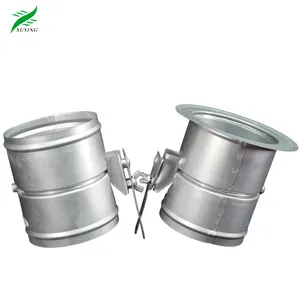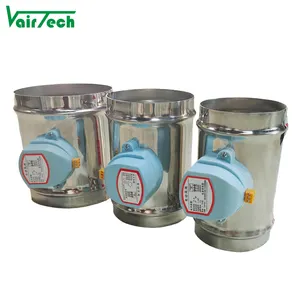
Volume Control Damper HVAC Accessories Manual Metal Galvanized Steel Round Air Ventilation Duct Volume Control Damper


Hvac Duct Damper Accessories Galvanized Steel Round Volume Control Damper For Duct Ventilation System























Volume control dampers are integral components in heating, ventilation, and air conditioning (HVAC) systems, designed to regulate airflow within ductwork. These devices play a crucial role in balancing and controlling the air volume to ensure optimal indoor air quality and comfort.
There are various types of volume control dampers, including manual, motorized, and automatic models, each suited for specific applications. Manual dampers are adjusted by hand, while motorized versions use electric or pneumatic actuators for operation. Automatic dampers adjust themselves based on the system's requirements. These dampers are commonly installed in commercial buildings, industrial facilities, and residential complexes, contributing to efficient HVAC system performance.
The construction of volume control dampers often involves materials like galvanized steel, aluminum, or stainless steel, chosen for their durability and resistance to corrosion. Features may include flanged or slip-in connections, with blades that can be parallel or opposed in action. The design ensures minimal leakage and can include seals for additional tightness.
Effective airflow control is one of the primary advantages of using volume control dampers. By managing air distribution, these dampers contribute to the energy efficiency of HVAC systems, reducing power consumption and operational costs. Additionally, they aid in creating zoned climate control for enhanced occupant comfort and can help in maintaining proper indoor air pressure.
When selecting a volume control damper, considerations should include the size and compatibility with existing ductwork, the environment in which it will operate, and the specific airflow requirements of the space. It's also important to consider the damper's ease of access for maintenance and the type of actuator that will be used if opting for a motorized version.
Volume control dampers should comply with industry standards to ensure safety, reliability, and performance. These standards may dictate construction materials, design specifications, and testing methods. Buyers should verify that the products meet the relevant standards for their specific application and location.